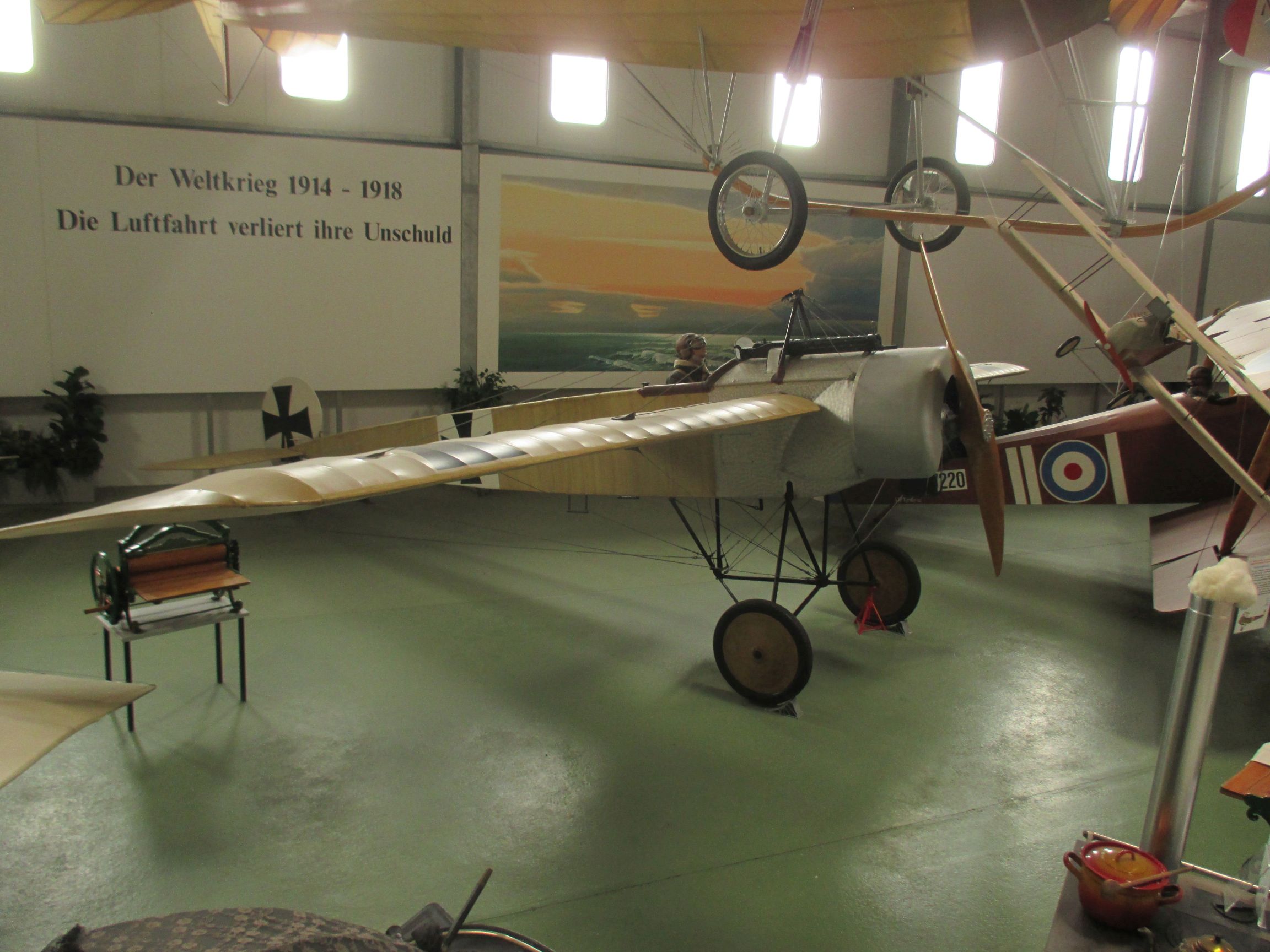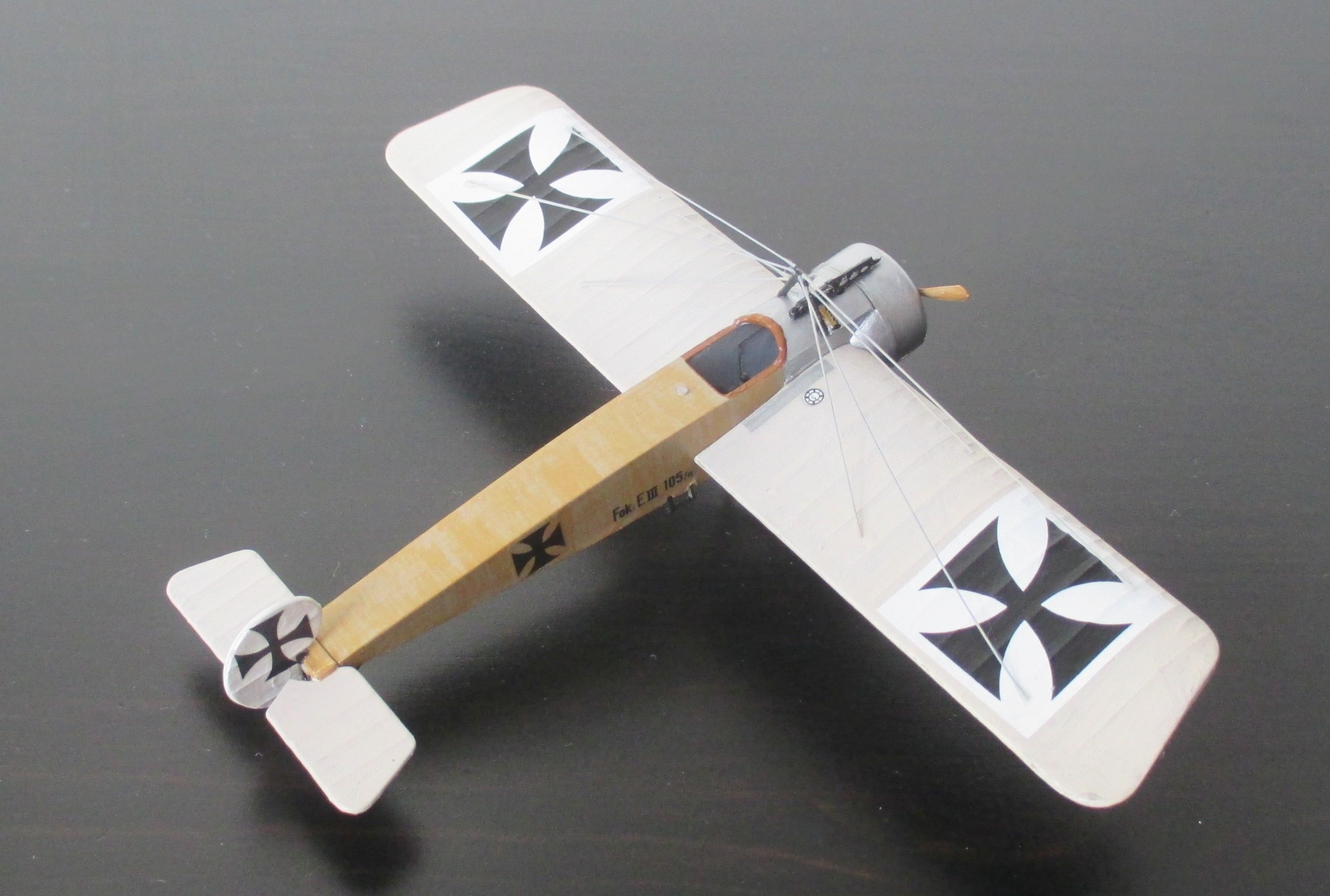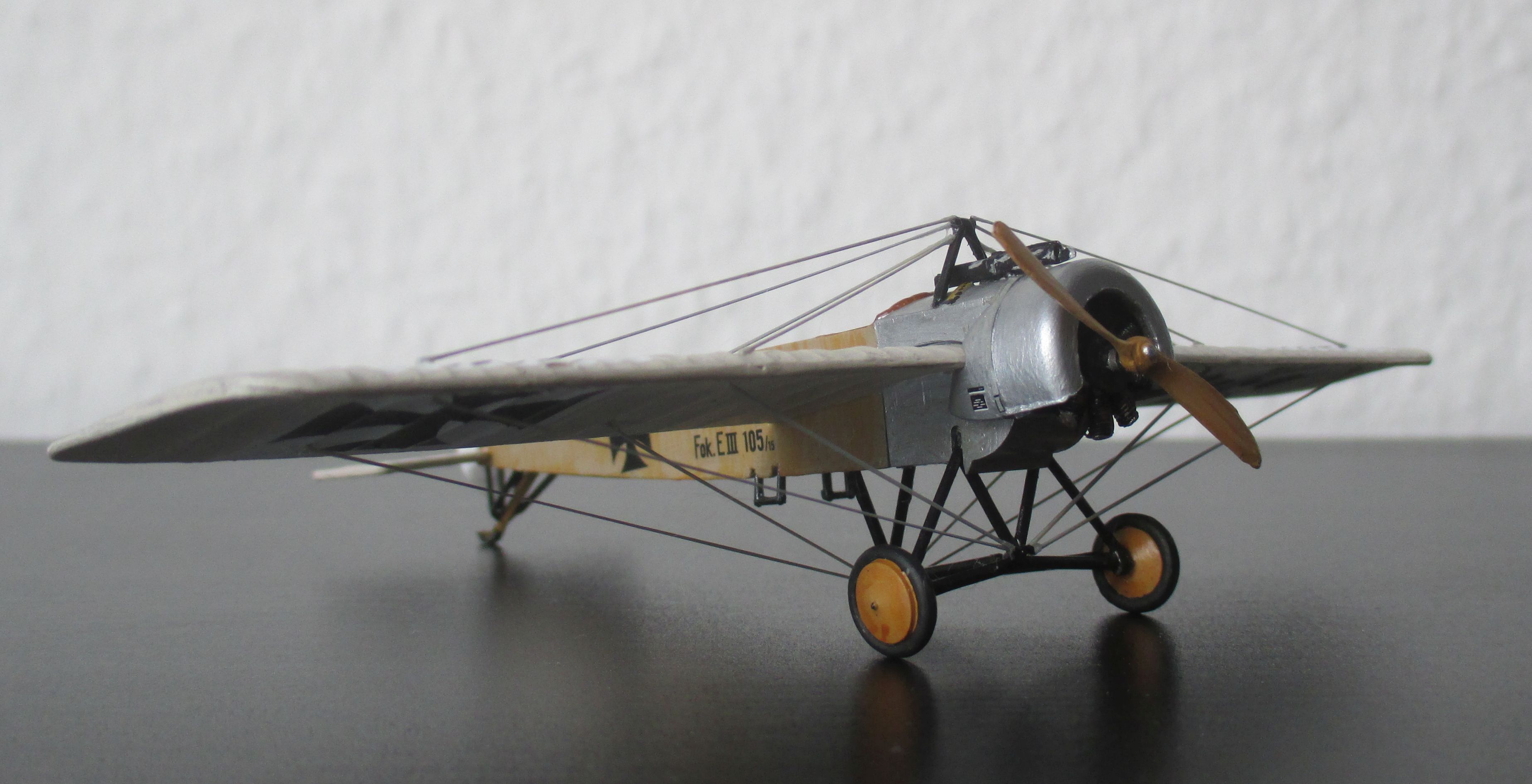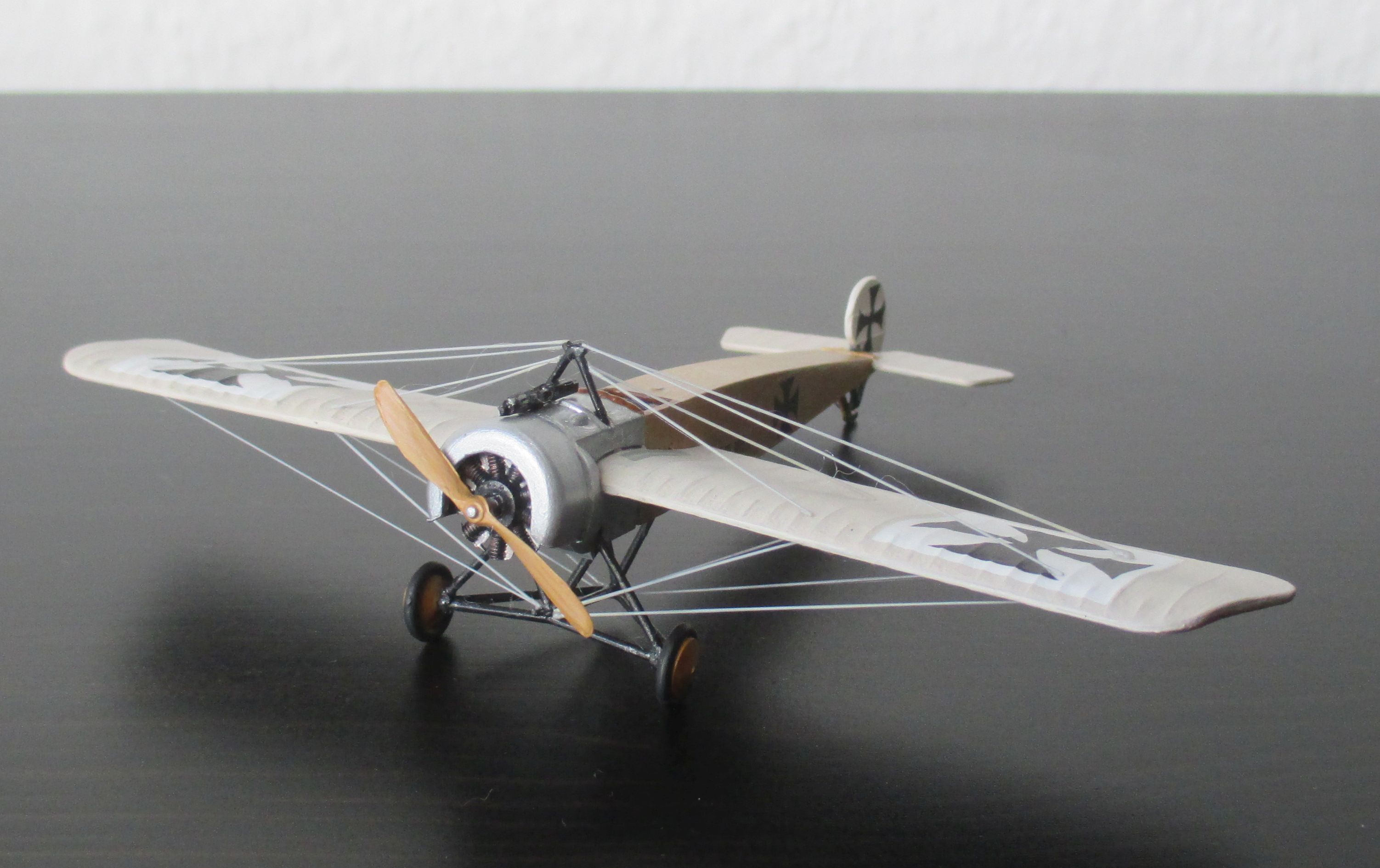Model of the month Juni 2021
Let´s go hunting
From original to model
An independent part of the collections of the Aviation Museum Hanover-Laatzen are the round about 1,000 scale models, mainly of the international standards 1/72 and 1/48.
Such true-to-the-original miniatures give observers of the history of technology in museums an "overview", not only of the individual exhibit (sometimes even as the only possibility of a three-dimensional display if there is no surviving original), but also of the lines of development of aircraft construction through the arrangement and comparison of the exhibits. Sometimes they even close gaps in the presentation of the originals. The quality of their craftsmanship alone is a pleasure to behold.
Today we present the world's first fighter aircraft as "Model of the Month": the Fokker E.III. It is on display as a faithful replica in hangar 1 of the Aviation Museum. This model can also be found as a large-scale version under the ceiling and several times in 1/72 scale in the display cabinets.
The kit: Fokker E.III (Revell, 1/72)
As long as I have been building models - for about 50 years now - this kit with 26 parts has been available from Revell. Company logos and packaging changed, every now and then there was a new cover picture and a new set of decals, but in the shape the kit remained unchanged; like its original a true classic by now...
The prototype of our kit is the 1:1 replica of the Fokker without camouflage or decorative colours in the museum. The pilot figure has been omitted, the cockpit has been supplemented with a control stick, etc., and instead of the sewing thread that has always been recommended, the model has been braced with plastic pulled over a candle. The appearance of the aircraft corresponds to its condition when it was delivered to the Fliegertruppe.
And still, even though there are now far more detailed kits of this type, this kit, if carefully built, can be added to any collection...
A look into history
In 1915 the world war has already lasted for nearly a year. Planes are used as reconnaissance and artillery observers. The military thought about dropping bombs with them. To fight off these three dangers, an aircraft is needed that can search for, hunt down and shoot down the enemy, or at least push them away. All combat parties are working on this task. The English, Italians and French are experimenting with great promise.
But the 'Fokker Aeroplanbau', founded by the Dutchman Anthony Fokker in Schwerin, northern germany, was the first to find the solution: its designers presented the first practicable fighter aircraft with the Fokker E.I, developed from the unarmed multi-role aircraft M.5k. This single-seat monoplane is equipped with a machine gun mounted rigidly on the nose of the fuselage, which fires on the line of sight. By means of a breaker mechanism it is possible to fire through the propeller circle without damaging the blades. This invention makes it possible to act offensively and to attack other aircraft in a controlled manner. Within months, the E.II became the most widely built and used version, the E.III, powered by an Oberursel U.I rotary engine, a reproduction of a French engine. A total of around 340 Fokker monoplane fighters were produced - a large-scale production at the time, but not many if one considers their historical impact.
The "Fokker scourge"
In fact, thanks to this new design, 140 km/h (95 mph) top speed and moderate manoeuvrability were enough for the German pilots to be feared by the English and French as the "Fokker scourge" after Lieutenant Kurt Wintgens achieved the first aerial victory with this plane on July 1st 1915 and the Allies' losses subsequently soared. While both sides entered into an increasingly bloody competition in the skies with new bomber, reconnaissance and fighter designs, Oswald Boelcke and Max Immelmann developed the operational tactics of air combat on the E.III, which have been valid ever since. A strategy of air warfare, however, only began to emerge as the war progressed.
sb
Were we able to arouse your curiosity? If so, we would be delighted to welcome you to Ulmer Straße opposite the Hanover exhibition grounds as soon as the building is allowed to reopen its doors: please check our website
Captions:
BU 1: Ancestor of all fighter planes - the Fokker E.III. Here in 1/72 scale.
BU 2: Wood, canvas and metal. Some rubber and many metres of tension wire. In the model all this is plastic.
BU 3: The wingspan of 9.50 m has been reduced to just over 13 cm.
BU4: This faithful replica of a Fokker E.III in the Aviation Museum is the prototype of our model.




